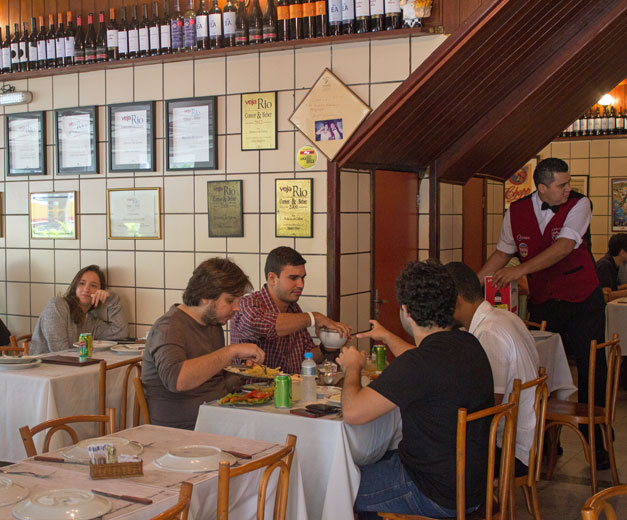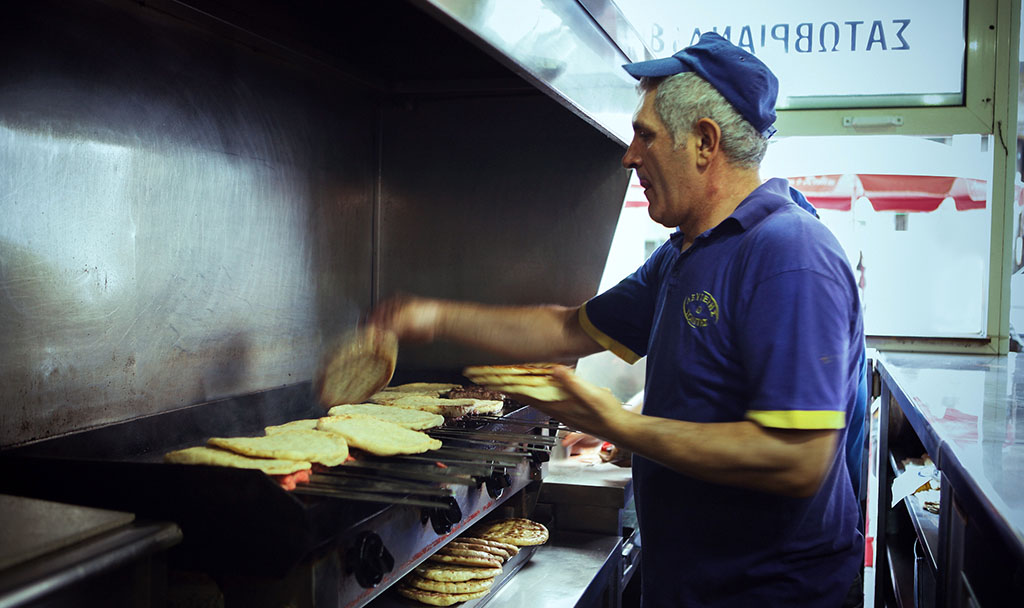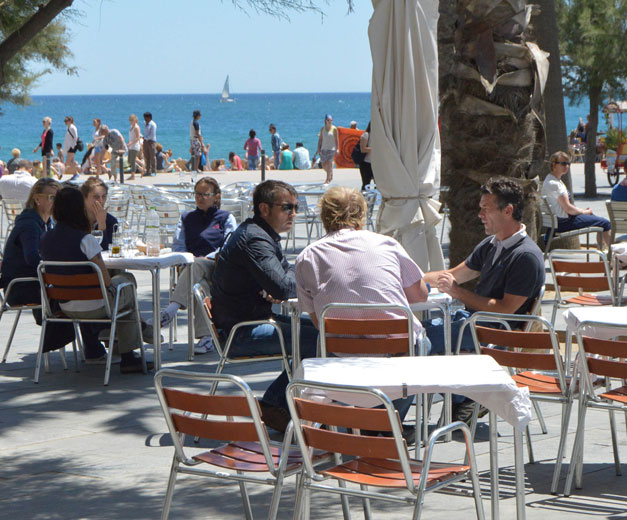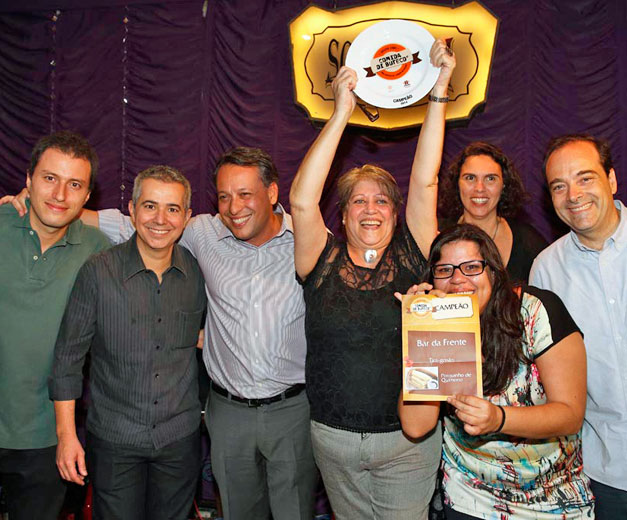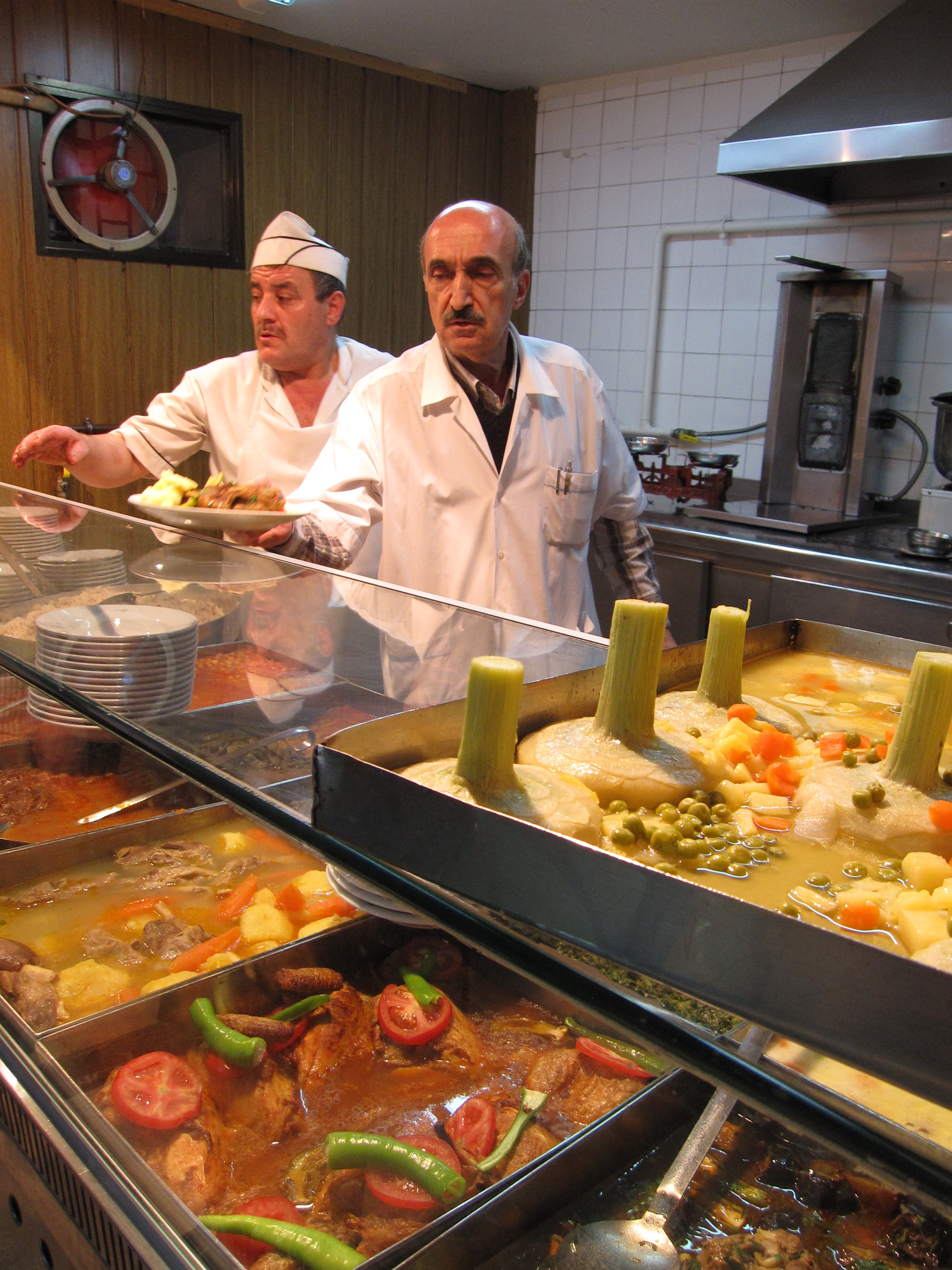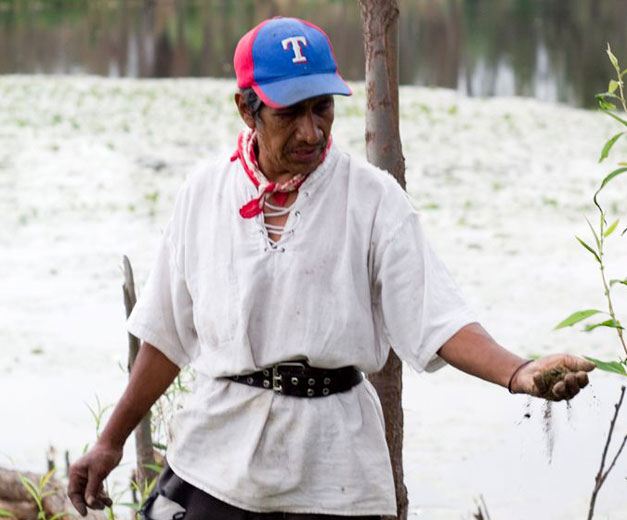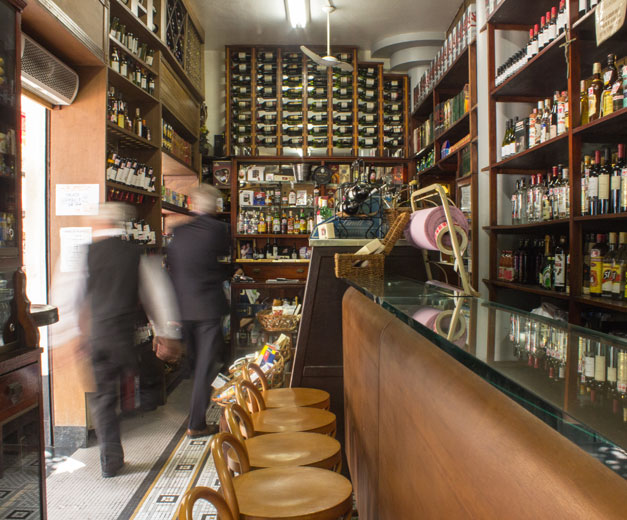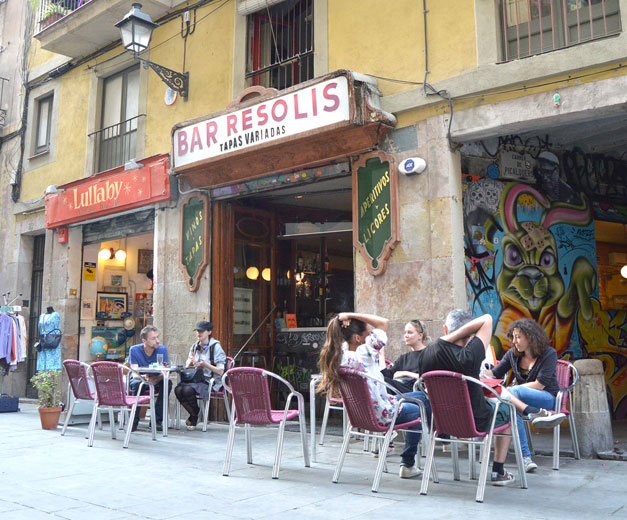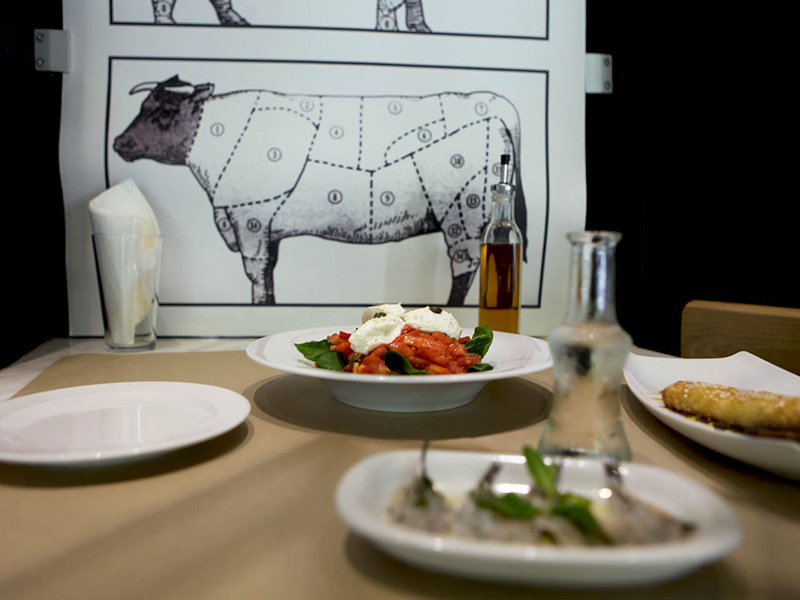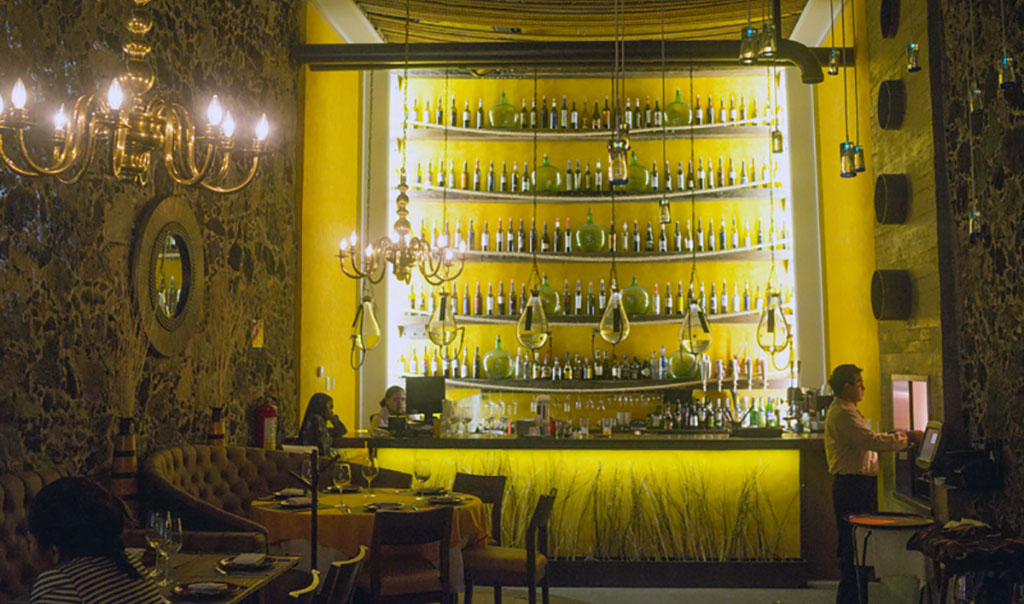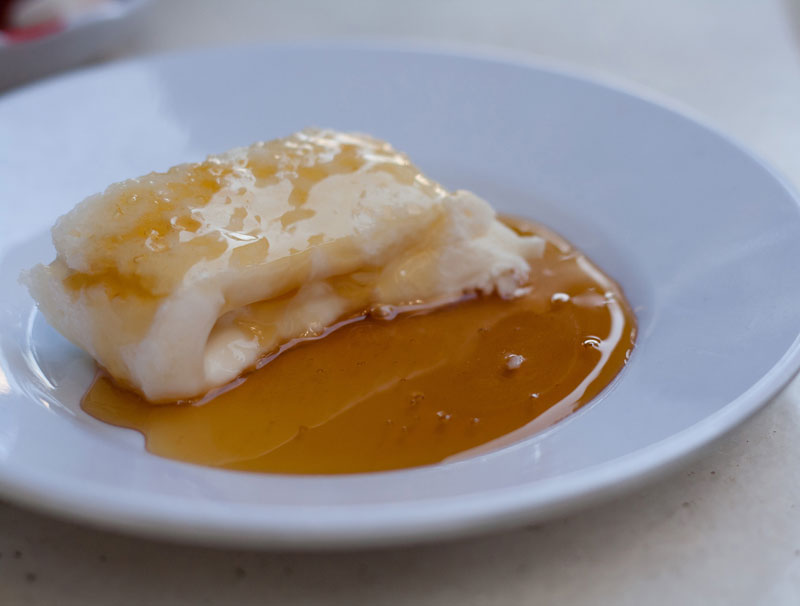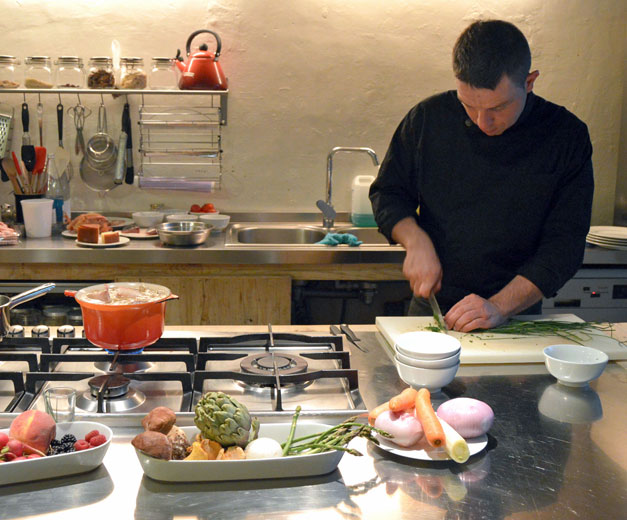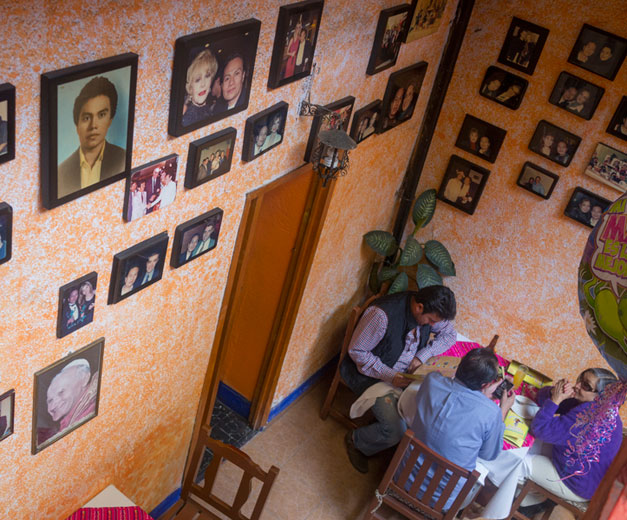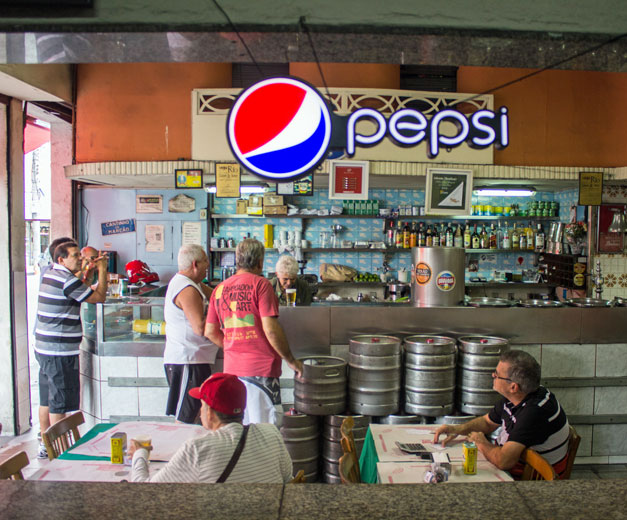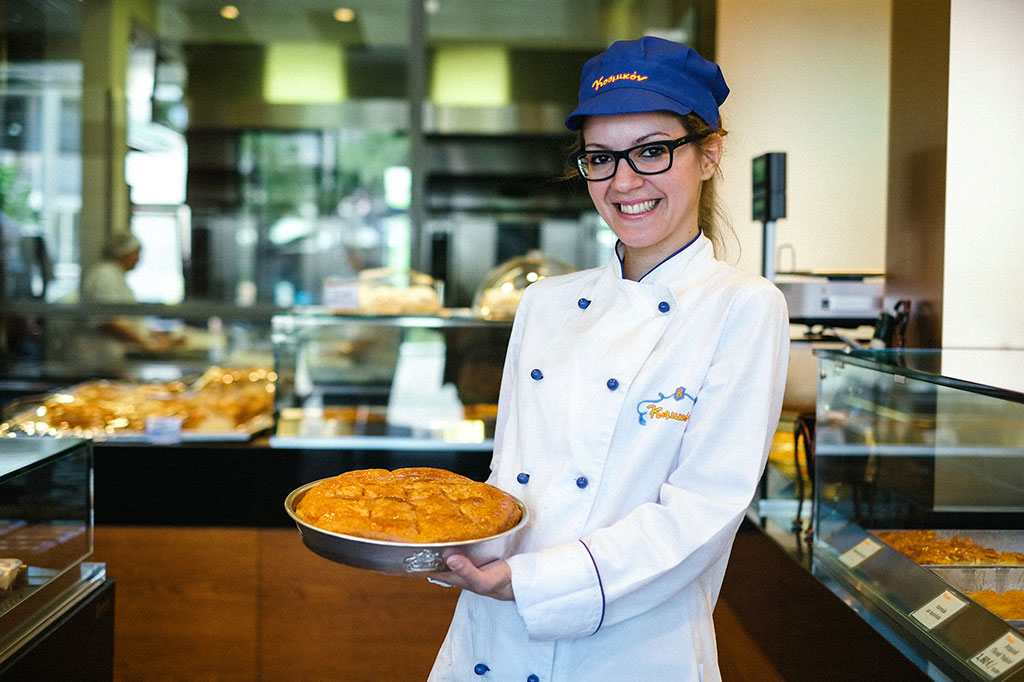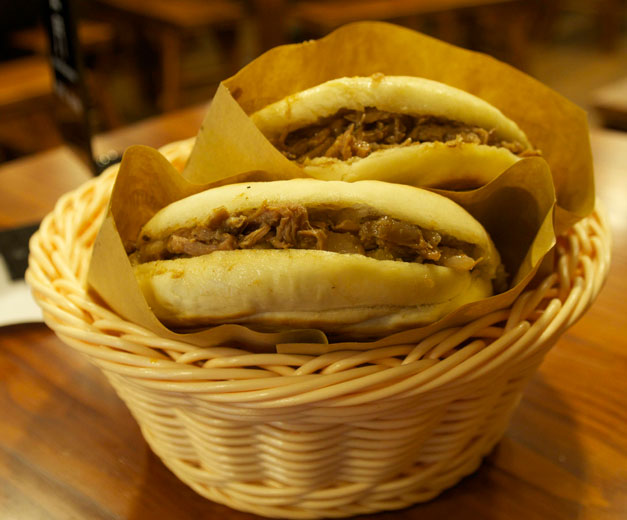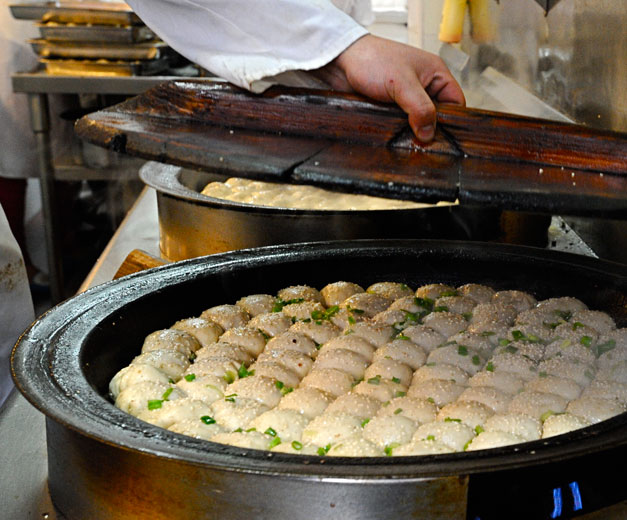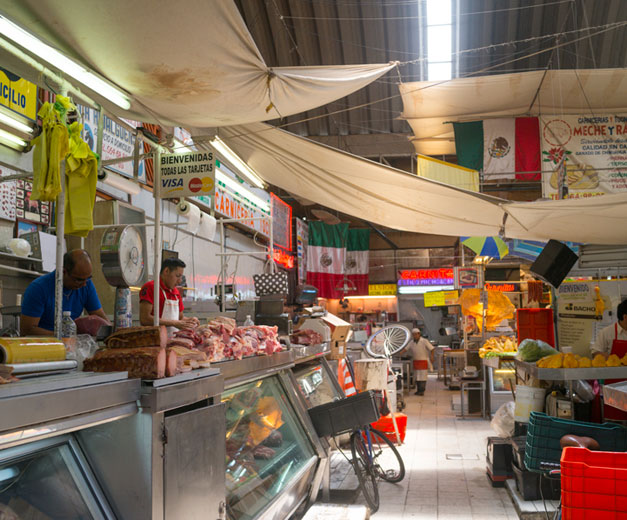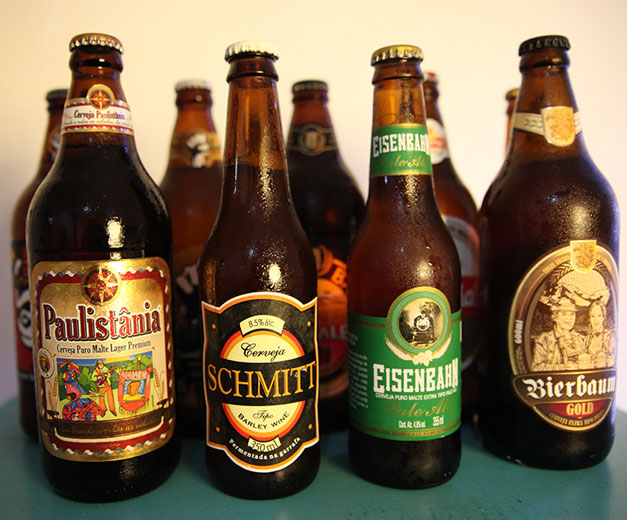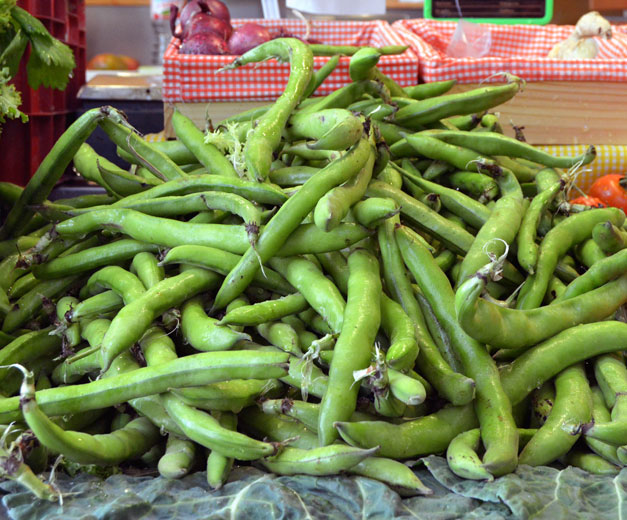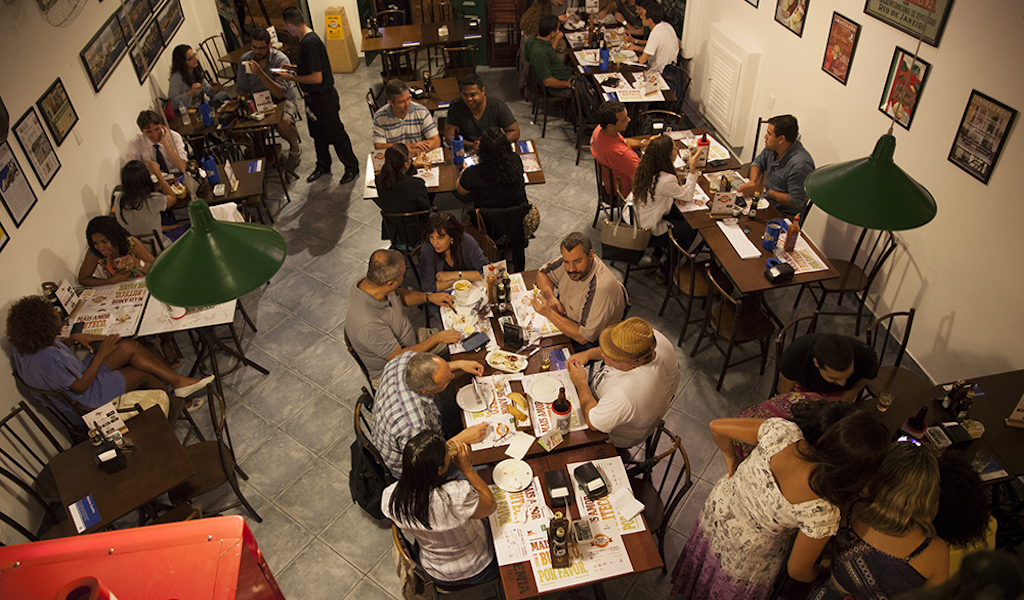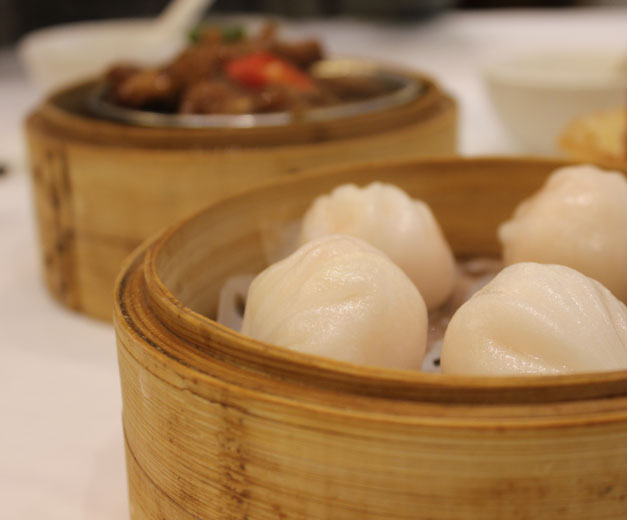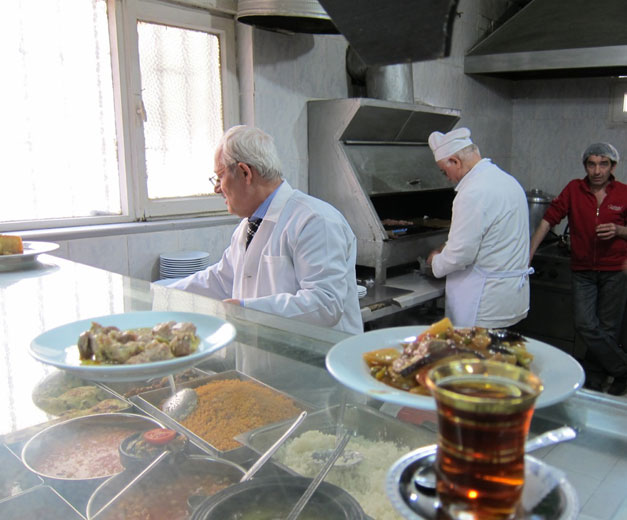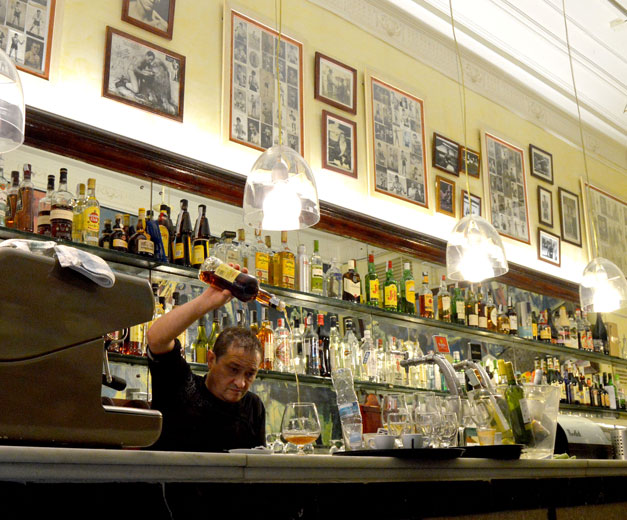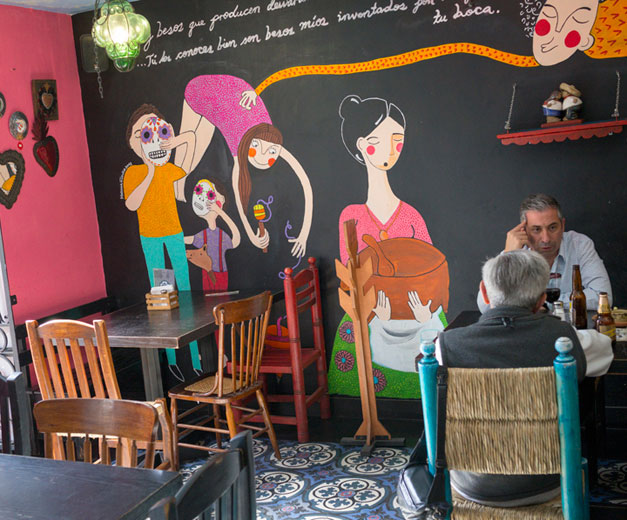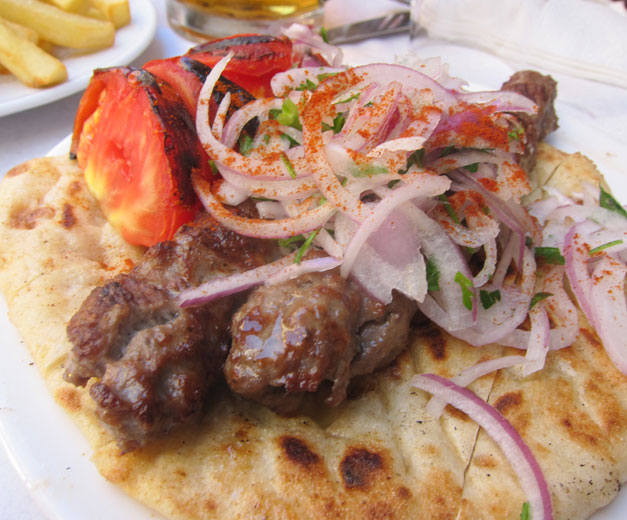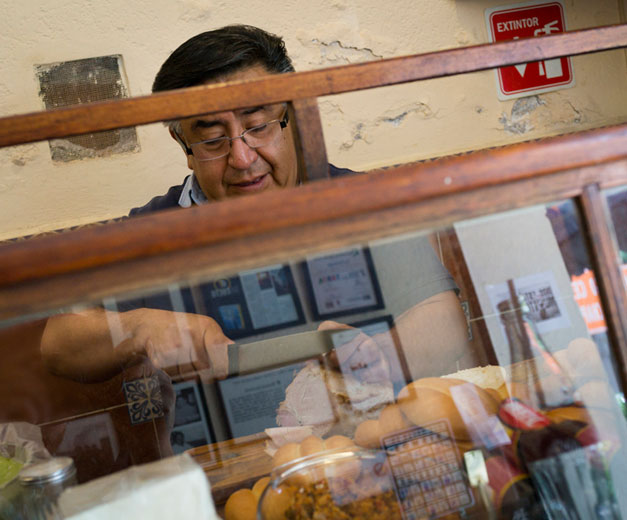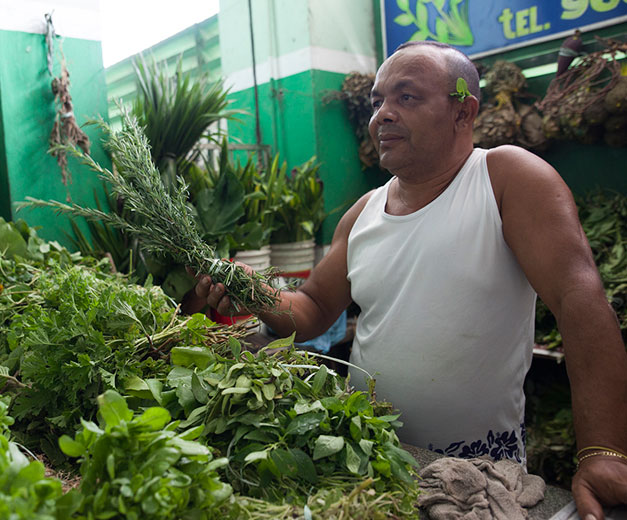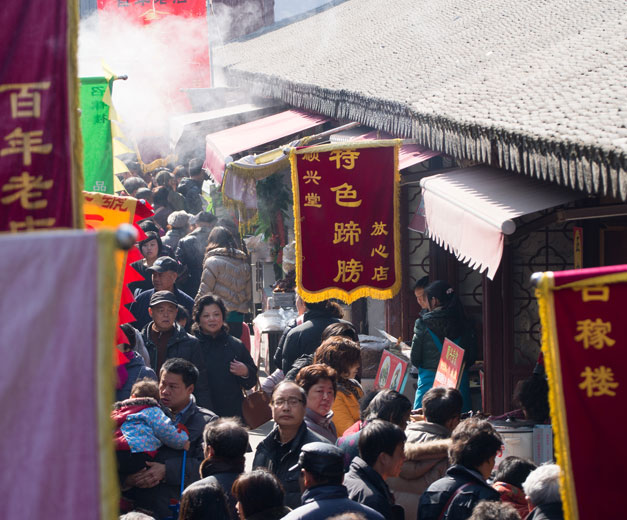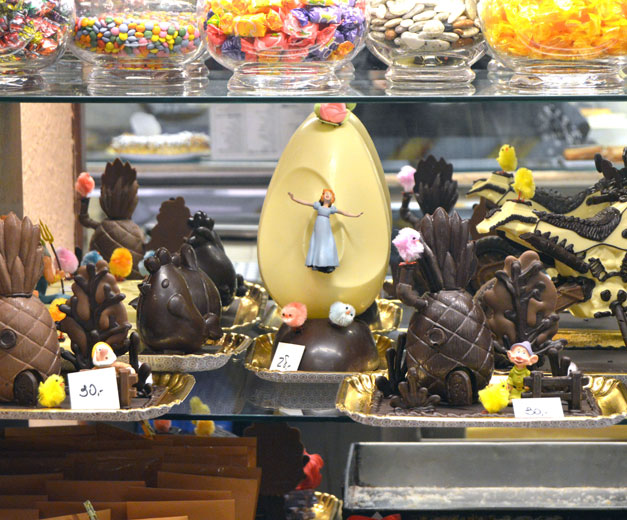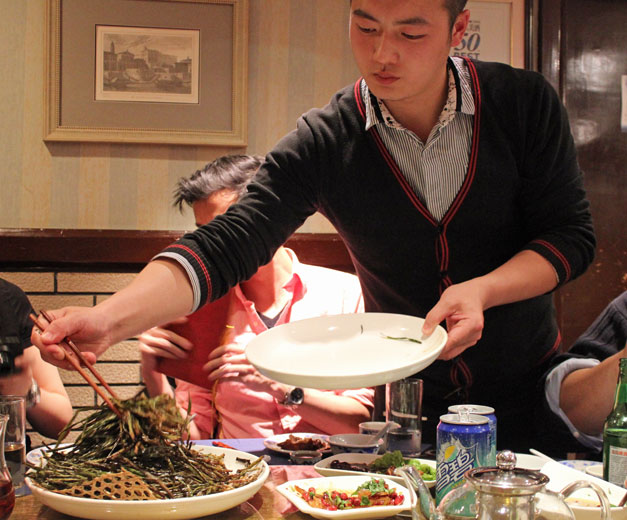We can't find the internet
Attempting to reconnect
Something went wrong!
Hang in there while we get back on track
Search results for
Rio
Game On: Where to Watch the World Cup in Rio
In a couple of days, Brazil will be the center of the world. And over the course of the World Cup, Rio will host seven matches, including the big final. Needless to say, the city is already packed with visitors from all over the world, all of them hoping for a ticket to watch at least one of those matches at legendary Maracanã Stadium. But only a privileged few will get to see the beautiful game in person; most people will support their national teams in front of a TV. But where? Inside a boring hotel room? Of course not. Everybody will be on the streets trying to find a good place to watch the games and have a lot of fun at the same time. And in Rio, watching soccer matches at bars is a national sport that is almost as important as the futebol itself. Here’s our list of the best “watch-and-drink” bars in town.
Read moreShanghai
Thousand Mile Fragrant Wontons: Souper Dumplings
One of China’s most successful franchise stories comes from Putian, a coastal city in Fujian with a population of about 3 million. The province is probably known best for the many who leave it, especially those who have been smuggled into the United States by snakeheads, and including domestic emigrants who move to hub cities, bringing their culinary traditions along with them.
Read moreRio
First Stop: Anthony Wilson's Rio
Editor’s note: We asked jazz guitarist and composer Anthony Wilson where he heads first for food when he lands in Rio. Wilson has been a member of Diana Krall’s quartet since 2001 and has recorded with Paul McCartney, Willie Nelson, Madeleine Peyroux and Barbra Streisand, among many others. His 2011 album “Campo Belo” was recorded in São Paulo with Brazilian musicians André Mehmari, Edu Ribeiro and Guto Wirtti.
Read moreAthens
Downtown Athens Souvlaki Classics, Part 2
We first wrote about classic souvlaki joints a year and a half ago, and since then, those spots we recommended have only become more popular. We can’t take all the credit, however; as we mentioned in our primer, the humble dish has undergone a renaissance of sorts, and there are now all sorts of places you can find it – from hip and fashionable boîtes to traditional holes-in-the-wall. We’ve rounded up a few more that we love.
Read moreBarcelona
The Great Outdoors: Barcelona's Top 5 Restaurant Terraces
The favorite outdoor pastime of most Barcelonans is eating and drinking on a terrace. From the simplest bars to the most sophisticated, multi-starred alta cocina restaurants, something like half of our fair city’s eateries have space where diners can enjoy their meals a la fresca (and smoke a cigarette, too). Many of the best-known terraces sit on the rooftops of hotels, providing lovely tables and astonishing views that extend to the limits of the Mediterranean and menus that fill the pages of the latest Michelin guide.
Read moreIstanbul
Çay Times: The Everyday Ritual of Turkish Tea
Tea is to Turkey what fizzy, watery beer is to Milwaukee - consumed in copious amounts, a desired chemical reaction takes place, but its real value lies not in the taste but in the ritual of swilling. Without noticing it, tea has snuck its way into daily life for us. We never really enjoyed the flavor of standard Turkish tea, but it is part and parcel of the rich Turkish experience. In Kars, memorably, we guzzled it from a pockmarked, coal-fired samovar stamped with a Russian crest as we sat in the shade beside a river. In the eastern Black Sea, it was the offer of a tea that brought us into a village çayhane, where we eavesdropped on the local men speaking their Pontic Greek dialect, as they warmed their feet around a stove. Tea unlocks doors.
Read moreShanghai
Get in Line: Shanghai's Top 5 Restaurants Worth the Wait
Nanxiang Steamed Dumpling Restaurant has one of the most historic queues in town. The creators of Shanghai’s famous soup dumpling have a suburban origin story that turned central when they relocated next to the tourist destination Yu Gardens in 1900, but time hasn’t been on their side. A government-owned company since 1945, Nanxiang’s passé dumplings are ones to take a pass on, even if they didn’t require standing single-file for an hour at peak meal times. But there are some restaurants and food stalls in Shanghai that are well worth the wait.
Read moreRio
Best in Show: Crowning Rio's Top Gastrobar of 2014
And the winner is... Okay, okay, it’s nothing like the Oscar ceremony. But everyone in attendance at Comida di Buteco 2014 – the most important popular gastronomy competition in Rio – did hold a collective breath moments before the winner was announced. When the hostess proclaimed Bar da Frente the victor, the Rio Scenarium, the old theater in Lapa where the award ceremony was held, almost came down. Screams, tears, emotional speeches – there was definitely some similarity to the Academy Awards, we have to say. After a month of extremely hard work and profound hope for the 31 bars that took part in the competition for “best botequim food” in town, this was the moment we had all been waiting for.
Read moreIstanbul
Özkonak: The Real Pudding Shop
Editor's Note: Sadly, Özkonak closed its doors on Dec. 31, 2021. Regulars at Özkonak, a well-loved fixture in Cihangir’s ever-changing restaurant scene, must cluck in disapproval at the sight of a new generation of customers who walk right past the pudding display at the front and head for the steam table and its selection of prepared savory dishes in back. Though the lunch specials here are quite tasty, Özkonak is a pudding shop at heart and should be approached accordingly. To fill up on stuffed eggplant and beans before dessert is to deny yourself the sweet, milky pleasures that have made this a neighborhood institution for almost 50 years.
Read moreMexico City
Xochimilco's Chinampas: Ground Work
Several weeks ago, we visited the ecological reserve of Xochimilco to meet some of the people who are trying to make a difference in food production in Mexico City. Aboard a colorful trajinera, or boat, we enjoyed a delicious salad made with local produce, as well as chicharrón, guacamole and locally produced cheese while Ricardo Rodriguez, owner of De La Chinampa, explained to us what the project is all about. “We’re trying to connect producers with consumers. What we do is bring the food from the soil to the table, always making sure the small and local producers benefit from this trade and keeping in mind where the food comes from and its history. Our main goal is the ecological restoration of the zone through the commercialization of the local products.”
Read moreRio
The Botequim: Rio Gastrobar Classics, Spanish Edition
After Portugal, Spain is second in exerting the most influence over the traditional bars and botequins of Rio. Even though the number of immigrants from Spain is less than that of Germany or Italy, the Spanish, like the Portuguese, took over much of the popular commerce in the city at the end of 19th century and the first half of the 20th.
Read moreBarcelona
Resolís: Tapas in Every Port
In Barcelona, these are fortunate times we’re living in, gastronomically speaking. We’re blessed with a growing multitude of tapas bars whose humble appearances belie the excellent culinary chops behind them. Bar Resolís is one of these. The eatery is known mainly because of its location in the heart of Raval, the most multicultural neighborhood in Barcelona. It sits on a street lined with vintage clothing shops and is outfitted with a cute mini-terrace, a small open bar and windows that frame a wall full of colorful graffiti in the passageway adjacent. It’s the ideal laid-back setting for us to enjoy a vermut with our elbow on the sill while checking out the intriguing handbags in the shop window in front.
Read moreAthens
To Mavro Provato: Raising the Bar on Meze
There is something magical about the area where To Mavro Provato is located, near the rather mysterious Proskopon Square in Pagrati. The square itself, hidden behind Vasileos Konstantinou Avenue, is usually dark even in the daytime thanks to the tall shady trees that fill it.
Read moreMexico City
Los Limosneros: Instant Classic
Juan Pablo Ballesteros comes from a family of entrepreneurs. In 1912, his great-grandfather, Rafael Ballesteros, opened Café Tacuba, which is today a food landmark in Mexico City’s Centro Histórico. Not far from this culinary treasure is Los Limosneros, which Juan Pablo opened more than a year ago, seeking to continue his family’s legacy while building a reputation of his own.
Read moreShanghai
CB on the Road: Hong Kong, Maximum (Eating) City
The hardest part about dining in Hong Kong is choosing among the overwhelming number of options. It’s one of the most densely populated cities on the planet, with more than 7 million mouths to feed – and many with demanding palates. You can stand on just about any block in the city and find several affordable eateries above, below and across from you (kind of like Starbucks in Seattle).
Read moreIstanbul
Kaymak: The Heavenly Cream
Editor's note: We are profoundly sad to report that Beşiktaş Kaymakçı has closed. In our imagination, kaymak – the delicious Turkish version of clotted cream - is the only food served in heaven, where angels in white robes dish out plate after plate of the cloudlike stuff to the dearly departed, who no longer have to worry about cholesterol counts and visits to the cardiologist.
Read moreIstanbul
CB on the Road: Springtime with Antep's Top (Home) Chef
The cuisine of Antep deserves every bit of the praise it receives. In the southeastern city known as the gastronomic temple of Turkey, the world’s most refined kebab traditions are obsessively guarded by a cadre of traditional ustas in the local grilling institutions. Baklava workshops are steeped in an odd mixture of science and voodoo that would titillate Willy Wonka himself. But coming down from a grilled meat and sweets binge, the body wants dolma, pilav, börek and çorba – the home-style food that is strangely absent in Antep’s restaurants.
Read moreBarcelona
First Stop: Michael Costa's Barcelona
Editor’s note: In the latest installment of our recurring feature, First Stop, we asked Michael Costa, head chef at the award-winning restaurant Zaytinya, in Washington, D.C., where he heads first for food when he arrives in Barcelona. El Passadís del Pep is home to the best, most authentic Catalan seafood in the city. There is no menu but they curate the experience in such a warm, kind way that you may find that you prefer not to have to deal with a menu. The cooking is classic, minimal and serves only to enhance the natural beauty of the ingredients. No Egotarian Cuisine here, just excellent product treated with respect.
Read moreBarcelona
Ask CB: Cooking Classes in Barcelona?
Dear Culinary Backstreets,My wife and I love to cook at home and for our friends, and we would love to learn more about Spanish cuisine on our next trip to Barcelona so that we can recreate our favorite meals when we return home. Where can we take English-language cooking classes in the city?
Read moreMexico City
Oaxaca en Mexico: The Mole Family
Oaxaca, in southwestern Mexico, is one of the country’s most biologically and culturally diverse states, with its Pacific coastline and confluence of mountain ranges at a tropical latitude and the numerous indigenous groups that have populated the area for centuries – or longer. All of these influences have produced a regional cuisine that is incredibly rich and deep and beloved among food-loving Mexicans (and non-Mexicans). Many immigrants from Oaxaca have brought this diversity of food and culture to Mexico City.
Read moreRio
The Botequim: Rio Gastrobar Classics, Portuguese Edition
Brazil, as everybody knows, was colonized by the Portuguese. But even with the end of colonial Brazil, the Portuguese continued to come: at the beginning of the 20th century, thousands of them immigrated to flee poverty in Europe and to start anew in Brazil – especially in Rio. As the capital of the colony for more than 400 years, Rio has been the most influenced by Portuguese traditions, architecture and, of course, gastronomy.
Read moreAthens
Galaktoboureko: Custard Queen
There is a certain rite of passage associated with being invited to dinner or coffee at a Greek friend’s house. Not so much because of what you will end up eating or drinking there, but because of what the other guests will be bringing as gifts. To most Western Europeans’ surprise, one of the most popular gifts for the host is a big dessert – the kind of cake that is usually reserved for birthdays or big celebrations in other countries. Greeks often arrive bearing big, rectangular patisserie boxes containing anything from a large cheesecake to ice cream- and sorbet-layered cakes. And of course, very often these boxes contain a pan of the Greek national dessert, galaktoboureko.
Read moreShanghai
Zhu Que Men: Legendary Noodles
Unwieldy English restaurant names often lose a lot in translation. Take Zhu Que Men, or “The Gate of the Vermillion Bird.” The name, which draws on Chinese astrology and Taoism, might seem a little highfalutin’ for a home-style noodle joint, but the subtext speaks volumes.
Read moreShanghai
First Stop: Lillian Chou's Shanghai
Editor’s note: In the latest installment of our recurring feature, First Stop, we asked Lillian Chou, former food editor of Gourmet and now a freelance writer in Beijing, where she heads first for food when she arrives in Shanghai. There are several factors that decide where I eat first when I arrive in Shanghai – mostly, it’s whether I’m alone or with friends and what kind of eaters they are and how much time we have.
Read moreIstanbul
Istanbul's Spring Foods: The Wild Ones
Spring arrives at the markets in Istanbul with a great deal of color and fanfare. Vendors arrange peas in perfect diagonal rows, displaying their goods to lure you into a multi-kilo purchase. Men furiously carve out artichoke hearts and toss them into lemon-water-filled bags, step around massive piles of trimmings and hand you what feels like a new goldfish purchase. Fava beans are ubiquitous in their fuzzy pods, although less appealing because of all the prep work that comes with them. Best to enjoy fava beans in a restaurant, zeytinyağlı-style (with olive oil) and or in our favorite preparation, a garlicky mash like the chefs make at Müzedechanga in the Sabancı Museum.
Read moreMexico City
Mercado de Medellín: Smiles (and Provisions) by the Kilo
In Mexico, marketplaces have been the soul of communities for millennia, and of the many modern-day ones we’ve visited in Mexico City, the one we’re always most excited to return to is Mercado Medellín in Roma Sur. Recently, we visited with a guide, an American expat who gets her produce and meat there every week and could get us the inside scoop. Our first stop was La Sorpresa butchery. Arturo, the owner, shook our hands and continued breaking down a large piece of beef for a special delivery. He told us that his family has run La Sorpresa inside the market for 25 years. The meat they sell comes from different slaughterhouses in the country, and even from the United States.
Read moreRio
Brazilian Craft Beer: Land of the Rising Suds
Editor's Note: Sadly, these spots are closed now. In February, the Rio state assembly took an unprecedented measure and passed tax breaks for microbreweries that produce less than 6 million liters of craft beer a year. We don’t actually endorse such foregoing of public funds in a place like Rio, where a recent survey found 28,000 elementary schoolchildren to be illiterate and where a responsible young woman is told in a public health clinic that it will take her four months to get an appointment for an STD test.
Read moreShanghai
Palace Duck: Under Pressure
Some people argue that it’s not KFC’s secret blend of 11 herbs and spices that makes their fried chicken so successful, but rather the cooking technique. Deep-frying the chickens in a pressure cooker saved on oil and time in the 1930s, making the crispy bone-in chicken a feasible option for fast-food chains. Until this new gizmo became popular, the fast-food industry was almost exclusively made up of quick-serve burgers and fries.
Read moreBarcelona
First Stop: Anya von Bremzen's Barcelona
Editor’s note: We asked writer Anya von Bremzen where she heads first for food when she arrives in Barcelona. She is the winner of three James Beard awards, a contributing editor at Travel + Leisure and the author of five cookbooks, including the recently published Mastering the Art of Soviet Cooking: A Memoir of Food and Longing.Most Barcelona tapas haunts, old and new, pay homage to the bares de producto, the astounding ingredient-laden kioskos (dining stalls) of the buoyant Boquería market. It might be crowded and touristy but on my first morning in town, Boquería is still my Holy Grail. The best time to go? Around 10:30 a.m., when the stalls are less crowded between lunch and dinner. Right by its entrance, I stop to pay my respects to the legendary chickpea-and-butifarra sausage stew at Pinotxo. Its owner, the venerable Juanito Bayen, is now nearing 80 but looking dapper as ever in his satin vest and bow tie. Juanito is still a maestro of counter banter, spiking coffee with brandy for dour resident fishmongers, plying Japanese tourists with pristine razor clams, smiling for cameras next to Ferran Adrià.
Read moreIstanbul
CB on the Road: Getting Souped Up at Gaziantep's Metanet
It is impossible to sleep late in Gaziantep, despite the tranquility of the historic quarter, the calming, hunker-in-and-go-back-to-sleep effect of the hotel room’s thick stone walls and the comforting, dusty smell of antique furniture. Even the promise of a nice breakfast spread served between 7:30 and 10 a.m. could not keep us from hitting this ancient southeastern Turkish city’s streets. At 6 a.m., we were rambling through Gaziantep’s coppersmiths’ bazaar. As we walked by, the metal shutters of spice shops were thrown open in a clattering roar, whooshing an aromatic cloud into our path. Street sweepers worked their beat with twiggy, homemade-looking brooms as groups of shopkeepers lingered over the first of many more teas and smokes at the corner çayhane. Exiting another artery of covered bazaars, we stepped out into bright morning light, which shot through the brooms of street sweepers at rest, creating crazy mangrove-like shadows on the sidewalk. We were close now, so close we could smell it.
Read moreBarcelona
Spring Fever: Seasonal Market Foods in Barcelona
The reach of globalization and industrial agriculture is such that you can find pretty much any kind of vegetable all year long at markets throughout Spain, but there are a still a few holdouts that arrive at very specific times of the year, and only for a fleeting moment. This is the produce we look out for, along with signs indicating the precise provenance. Artichokes from El Prat and the Ebro Delta are nearing the end of their all-too-brief visit, while the rare strawberries and wonderful peas of Maresme, on the coast of Barcelona province, have just begun appearing at market stalls. Others, such as the humble fava, arrive with less heralding but are no less welcome.
Read moreMexico City
Rick's Picks: Bayless's Mexico City Favorites
Editor’s note: Award-winning cookbook author, chef-restaurateur and television personality Rick Bayless is a renowned expert on Mexican cooking and a frequent traveler to Mexico City. He recently shared with us his list of must-visit places in Condesa, Roma/Roma Norte and Polanco.
Read moreShanghai
Chinese Food Idioms: Killing the Chicken to Show the Monkey
In a country where the traditional way to greet someone translates to “Have you eaten yet?” (你吃了吗? Nǐ chīle ma?), it should come as no surprise that food idioms permeate everyday language in China. Chinese culture also prizes indirectness, so idioms are the perfect way to portray deep meaning without being overt. Frustrating for cross-cultural businessmen and language students or not, chengyu (成语), the ever-present four character idioms, and xiyu (习语), which are generally longer, are often the source of the hilariously mistranslated Chinglish you still see on street signs and menus today.
Read moreRio
Bar Imaculada: Old Rio, Reconceived
Editor's Note: Sadly, this spot is now closed. The locals of the Morro da Conceição are a proud bunch, and with good reason. To the north the cargo and cruise ships of Rio’s Port Zone steam in and steam out of Guanabara Bay. To their south the centro overflows with working cariocas during commercial hours. By evening, the centro becomes sparsely populated stretches of concrete and highway. The residents of Morro da Conceição have witnessed Rio history on its various sides.
Read moreMexico City
First Stop: Julie Doherty Meade's Mexico City
Editor’s note: We asked Brooklyn-based writer Julie Doherty Meade where she heads first for food when she arrives in Mexico City. Meade is the author of Moon San Miguel de Allende, Guanajuato, and the Bajío, Moon Living Abroad in Mexico, Moon Metro New York City, and the upcoming sixth edition of Moon Mexico City.
Read moreShanghai
Tao Heung: Dim Sum Import
Girdled by the South China Sea, the islands and peninsula that make up Hong Kong have had to grow up rather than out. This geographical constraint has resulted in more than twice as many skyscrapers as any other city in the world (1,251 and counting), and many of those high-rises house malls jam-packed with some of the best restaurants in the city. Now the trend of dining out amongst designer shops is heading north to Shanghai, as developers erect facsimiles of Hong Kong’s favorite malls on both sides of the Huangpu River. At IAPM, the latest shopping spot stocked with HK brands to open its doors to Shanghai, it seems fitting that Tao Heung is one of the most popular spots in the foodie and shopping mecca.
Read moreBarcelona
Spanish Food Idioms: Going Full Milk
You are what you eat, as the saying goes. Is it any surprise, then, that food figures so largely in popular culture all over the world? In Spain, we have a veritable cornucopia of food-related expressions. Here’s a taste: Dar una torta, “to give a cake.” To slap someone. But darse una torta, “give a cake to yourself,” means you hit something else. It’s a mild, lighthearted expression, even with tortazo, which is a bigger biff, and comes from the funny old circus setup where a clown throws a cake into the face of another clown.
Read moreIstanbul
Erol Lokantası: The Un-Tourist Trap
(Editor's Note: We regret to report that this establishment is no longer open.) Şenol Erol is trying to remain optimistic about running the last esnaf lokantası in Sultanahmet, where the market seems to demand tourist traps over traditional tradesmen’s restaurants. “I guess that makes us unique, doing things the old way,” he says, as if this vintage eatery needed a tagline.
Read moreIstanbul
First Stop: Aslı Aydıntaşbaş's Istanbul
Editor’s note: We asked Aslı Aydıntaşbaş, a columnist for Turkish daily Milliyet, where she heads first for food when she returns to Istanbul after a trip abroad. Aydıntaşbaş is also a commentator on CNNTürk’s show “Karşı Gündem” and has written for numerous publications, including the former International Herald Tribune, The Wall Street Journal, The New York Times, Forbes and Newsweek. Funny enough, I don't really crave Turkish food if I have been spending time out of the country. This is because, for starters, I am a foodie: I crave things. I schlep to the other side of town for a meal. I never hesitate to spend money on good restaurants.
Read moreBarcelona
Bar Mundial: Heavyweight Champ
The perpetually packed Bar Mundial is one of Barcelona’s elder statesmen. It opened for business in Santa Caterina-El Born in 1914 under the name Bodega La Chispa, and was rechristened with its current name in 1925, when the Tort family took over. The place is now run by third-generation owner Paco Tort. The old bar has history, that’s for sure – even El Chispa ("Spark"), the bartender, is a 30-year veteran of the place. And what keeps people coming back to Bar Mundial are the delightful seafood tapas, classic and contemporary, that issue from the tiny kitchen.
Read moreMexico City
El Beso Huasteco: Eastern Promises
Editor's Note: Sadly, this spot is now closed. La Huasteca, a region in Mexico that extends through several eastern states, including San Luis Potosí, Veracruz, Tamaulipas, Hidalgo, Querétaro and Puebla, gets its name from the pre-Hispanic civilization that inhabited the area. There are still some indigenous Huastec communities that live in the region, and like those of the rest of the country, their local food and customs have been highly influenced by the Spanish conquest and the influx of immigrants both domestic and international.
Read moreIstanbul
Spring (Food) Break 2014: Istanbul
With all of the anticipation of local elections in March, the scandalous graft-laden tapes leaked via social media, the communication fog brought on by the ban of Twitter and YouTube and the subsequent call for a vote recount in many cities, this city's stomach had good reason to be distracted. But one cannot survive on a diet of daily news alone. In case you all forgot, Spring is here.
Read moreAthens
First Stop: Peter Minakis's Athens
Editor’s note: For our First Stop series, we asked Toronto blogger Peter Minakis, who writes about Greek cooking and dining at Kalofagas, where he heads first for food when he arrives in Athens. Minakis is the author of The Everything Mediterranean Cookbook and his latest book, The Big Book of Mediterranean Recipes, is due out by the end of April.
Read moreMexico City
Best Thing Since Sliced Bread: Mexico City's Top 5 Torterías
Taquerías are probably the most common kind of eatery in Mexico City, but torterías, purveyors of tortas, the generously filled sandwiches that come on bolillo rolls or the smaller teleras, are not far behind. From stalls at subway station exits to restaurants that have been in business close to a century, torterías are a fixture in the city landscape. Here are five of our favorites, in no particular order:
Read moreRio
Mercadão de Madureira: From Live Animals to Dead Souls
For the carioca in need of grains in bulk, cheap party decorations, live animals and herbs for the ritual baths practiced in Afro-Brazilian faiths, the Mercadão de Madureira offers one-stop shopping. Madureira is a good two-hour bus ride from tourist-zone Ipanema and is tucked behind hills far from the ocean breeze, which means the neighborhood heats up even more than already steamy Rio. In the heart of Rio’s working-class north zone, the Mercadão is where cariocas who count every real go to comparison-shop and haggle for the best deals in the city limits. Remember that the minimum wage in Rio is less than 800 reais (about US$330) per month, and a middle-class family is defined as earning above US$450 per month. That means the 100-real meals of Ipanema are hardly palatable for the so-called “new middle class.” Despite the cheery BRIC emerging-economy narrative and the olho grande (“big eye,” or greed) of investors looking for a new consumer market, this sector of Brazilian society can be better understood as the working poor.
Read moreIstanbul
Erzincan Tandır Ekmeği: Village Loaves for City Folks
In the Kurtuluş district of Istanbul, we’ve lately been exploring links to older, nearly lost Istanbul culinary traditions. Spending time in the sweetshops, milk bars and şarküteri of this district, we’ve seen a glimmer, if faded, of the “Old Istanbul” that people remember from the 1950s and '60s, when the city’s historic minorities – Greeks, Armenians and Jews – played a prominent role in the culinary scene of the city. It’s a complex and endlessly fascinating subject, one that never fails to spark our curiosity. And then we were distracted by the smell of fresh bread. Fresh lavaş, to be more specific, being hoisted out of a fiery hole in the floor on a blackened hook by the sturdy Gül Hanım.
Read moreShanghai
Zhaojialou Water Town: Snack Street Field Trip
For visitors looking to get beyond Shanghai’s urban core, among the main attractions are the plentiful water towns that ring the outer suburbs in just about every direction. The name refers to the bygone reliance of these towns on water for irrigation and transport, especially in the form of canals. Billed as ancient villages, the popular destinations tend to be packed with visitors, with traditional foods as the main draw – perhaps due in part to the lack of other activities on offer.
Read moreBarcelona
Museu de la Xocolata: Chocolate City
In the weeks leading up to Easter, Barcelona looks like an extension of Willy Wonka’s factory-fun house: chocolate castles, houses, animals, cars, motorbikes and even cartoon characters and fútbol celebrities fashioned out of cacao populate the city’s traditional patisseries. Catalonian confectioners expect to sell some 600,000 chocolate sculptures decorated with yellow chicks, chocolate eggs and cakes studded with hard-boiled eggs and colored feathers this year. The last are known as monas, and godparents traditionally give these to their godchildren throughout Catalonia and other parts of Spain to mark the holiday.
Read moreShanghai
Old Jesse: The Inside Track to a Guidebook Favorite
Ask a Shanghainese person for the best běnbāng, or local, restaurant in town, and you’ll probably be pointed toward Old Jesse. The doyenne of haipai cuisine, this ramshackle restaurant is the darling of the guidebook industry, with mentions in publications from Travel + Leisure to Lonely Planet, but that doesn’t mean that it’s foreigner-friendly. In fact, when LP first published their listing back in 2008, Old Jesse stopped taking reservations in English for some time, just to spite the hordes of tourists vying for a seat in their tiny former French Concession establishment. Even now, the lingua franca in the packed dining room is Shanghainese, and it’s still not uncommon for a laowai’s reservations to disappear if he or she is just a few minutes late, or for foreigners to have to watch hungrily as the dishes they ordered come out to tables manned by locals first, even though said locals were seated long after them.
Read moreAthens
Greek Food Idioms: Turning Sour Grapes into Honey
With its rich, profound history – its roots lie in epics and at the foundation of modern civilization, after all – the Greek language is ripe for and with metaphor, particularly of the food-related variety. Folk sayings and proverbs have a prominent place in colloquial language and everyday life, and they are at turns humorous, instructive and ironic. And sometimes they are all three at once.
Read more

